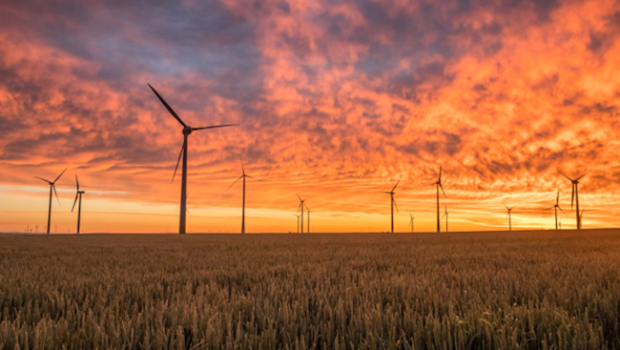How Texas Became America’s Leading State for Renewable Energy
Are you aware that Texas is the largest net energy supplier in the US, supplying about 25 percent of the nation’s domestically produced energy? Texas ranks second for solar energy, and the EIA or Energy Information Administration reveals it is also first for wind-generated electricity.
Texas is well on its way to becoming a frontrunner in renewable energy within the US, showcasing significant wind and solar power generation growth. Investments in infrastructure and policies promoting clean energy have positioned Texas as a pioneer in the shift toward sustainable practices.
This article explores how Texas, traditionally known for its fossil fuel industry, is looking towards the future and ensuring the sustainability of energy in the state and the US. We will examine the factors contributing to Texas’s leadership in renewable energy and provide insights into the state’s progress.
The Rise of Wind Energy in Texas
Wind energy has been a significant driver in Texas’s renewable energy boom. In Q1 2022, Texas produced more renewable energy than other states, generating over 14 percent of the US totals, mostly from its extensive wind energy program.
Favorable geographic conditions
West Texas’s robust and unwavering wind speeds provide the perfect conditions for establishing wind farms. The Roscoe Wind Farm, situated in West Texas, stands as a real-life testament to this, with the capacity to generate 781.5 megawatts of power.
Moreover, the expansive open spaces in the area offer ample opportunity to develop large-scale wind energy projects. The Horse Hollow Wind Energy Center, for example, has the capacity to generate 735.5 megawatts and sits on 47,000 acres of land.
Supportive policies and incentives
One of the best ways to incentivize investment in renewable energy is to make it mandatory. Texas established a renewable energy standard requiring utility companies to sell or generate a certain percentage of their output from renewable energy.
Initiatives like the Competitive Renewable Energy Zone (CREZ) developed transmission lines to deliver wind energy from rural areas to urban centers. These lines have been instrumental in transporting wind-generated electricity from West Texas to high-demand regions like Dallas and Houston.
The Texas Renewable Energy Credit (REC) program also encourages investment in wind energy. Providing financial incentives to renewable energy producers has facilitated the development of numerous wind farms.
Economic and environmental impact
Establishing wind farms to generate energy lessens reliance on fossil fuels, reducing carbon gas emissions. Moreover, it has helped thousands of Texans get jobs. As of 2020, the sector employed over 25,000 people in Texas, contributing significantly to the state’s economy.
The best part is that the push for renewable power sources has helped reduce carbon emissions from the electricity sector. Over the last decade, the state reduced its greenhouse gas emissions by 13 percent, even as consumption has increased by 20 percent. Increased use of natural gas and retirement of coal plants significantly contributed to this reduction.
The Growth of Solar Power in Texas
Solar power also rapidly expands in Texas, complementing the state’s wind energy efforts. According to the EIA, Texas has gone from generating about 1,900 megawatts of solar power to approximately 15,000 megawatts over just a few years. Recent reports show that solar energy production rose 47 percent from 2021 to 2022, producing enough electricity to power 2.3 million typical homes.
Abundant sunshine and land availability
Texas is well-suited for solar energy production because it has many sunny days throughout the year, providing an ideal environment for harnessing solar power. The state also offers extensive expanses of underutilized land that can be utilized to develop solar farms. These areas include deserts and former agricultural lands, which present prime opportunities for solar energy infrastructure.
Case in point is the Roadrunner Solar Project, the most extensive solar farm in Texas with an impressive capacity of 497 megawatts. Other solar projects in the state are strategically located in remote areas with minimal competing land use, making them well-suited for establishing large-scale solar farms. These factors highlight the significant potential for expanding solar energy production within Texas.
Technological advancements and cost reductions
Advances in technology have made the shift to solar energy more accessible. For example, photovoltaic technology innovations improved solar panel efficiency, allowing for comparatively higher energy production. Renewable electricity from the sun supplied 25 percent of the power used in 2020, up from just eight percent in 2010. Its solar capacity is set to increase four-fold by 2024.
Over the last ten years, the cost of solar installations has substantially reduced. This decrease can be attributed to economies of scale, which have lowered manufacturing and installation expenses for solar panels.
Government and private sector support
Collaborations between the public and private sectors have been essential in advancing the growth of solar infrastructure in Texas.
Texas power companies like Energy Texas have been instrumental in streamlining the way consumers can connect to and use the grid for renewable energy sources, which has greatly boosted the state’s embrace of solar energy.
Tax laws also play a role in the context of solar energy growth. By laying the groundwork for the federal Investment Tax Credit (ITC) and other incentives, these tax laws have served as a catalyst for the expansion of solar energy. The provision of tax credits for a percentage of the cost of solar installations has been instrumental in making solar power more financially viable for residential and commercial consumers.
In addition to the support provided by government incentives, private companies have also made substantial investments in solar projects throughout Texas. A prime example is Tesla’s commitment to developing large-scale solar installations and battery storage projects in the state. This underscores the private sector’s dedication to advancing renewable energy initiatives and signifies the significant strides made.
Challenges and Future Prospects
Texas has made significant strides in expanding its renewable energy sector. However, there is still a need for assistance to further this growth. The recent extreme weather events have tested the reliability of Texas’ power grid, underscoring the urgency of additional infrastructure enhancements to ensure greater resilience and stability.
Infrastructure and grid reliability
The Texas power grid needs significant upgrades to accommodate more power produced and consumed from renewable energy sources. The severe winter storm in 2021 exposed vulnerabilities in the grid, resulting in widespread power outages and underscoring the urgency of infrastructure enhancements.
An essential aspect of these upgrades is the incorporation of energy storage systems. The capacity to store surplus generated energy is crucial for maintaining a consistent power supply. Initiatives such as Tesla’s deployment of battery storage facilities can play a vital role in stabilizing the grid by storing excess energy for release during periods of peak demand.
Balancing energy mix
Texas faces the challenge of integrating renewable energy sources with traditional fossil fuels to ensure a balanced energy mix. Natural gas is crucial in this mix, serving as backup power when renewable energy output is low.
However, carefully managing the power grid is the key to maintaining a stable and reliable energy supply. That responsibility lies with the Electric Reliability Council of Texas (ERCOT), working to integrate more renewable energy sources into the grid while upholding reliability and stability.
Policy and regulatory support
Policies and regulations must adapt to changing energy landscapes and promote sustainability. Supporting the seamless integration of renewable energy into existing infrastructure is crucial. Federal policies like the Clean Power Plan and state-level initiatives have significantly promoted renewable energy in Texas. Incentives and subsidies such as the Production Tax Credit (PTC) can encourage further investment in renewable energy, contributing to the growth of wind farms in Texas.
The Lone Star State Leads the Green Way
Texas’s progress sets an example for other states to promote a greener future and reduce carbon emissions. It has become a leader in renewable energy through its significant investments in wind and solar power, supported by favorable geographic conditions, technological advancements, and supportive policies. However, ensuring the sustainability and reliability of Texas’s power grid requires ongoing investments and policy support.











![Will Rawls [siccer] stage performance - Photo by Jared Sorells.](jpg/will-rawls-siccer-stage-performance-photo-by-jared-sorells-50x50.jpg)
















